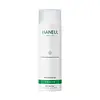What's inside
What's inside
 Key Ingredients
Key Ingredients

 Benefits
Benefits

 Concerns
Concerns

 Ingredients Side-by-side
Ingredients Side-by-side

Water
Skin ConditioningBetaine
HumectantButylene Glycol
HumectantGlycerin
HumectantNiacinamide
SmoothingAcetyl Glucosamine
Skin ConditioningBroussonetia Kazinoki Root Extract
Skin ConditioningMorus Alba Bark Extract
Skin ConditioningPyrus Malus Fruit Extract
Skin ConditioningCamellia Japonica Leaf Extract
Skin ConditioningCamellia Sinensis Leaf Extract
AntimicrobialCentella Asiatica Extract
CleansingGalactoarabinan
Tricholoma Matsutake Extract
Skin ConditioningSophora Japonica Flower Extract
Skin Protecting1,2-Hexanediol
Skin ConditioningCnidium Monnieri Fruit Extract
HumectantThymus Serpyllum Extract
Skin ConditioningPPG-1 Trideceth-13
EmollientDipropylene Glycol
HumectantHydroxyacetophenone
AntioxidantCaprylyl Glycol
EmollientDipotassium Glycyrrhizate
HumectantTetrasodium EDTA
Benzophenone-4
UV AbsorberCitric Acid
BufferingParfum
MaskingWater, Betaine, Butylene Glycol, Glycerin, Niacinamide, Acetyl Glucosamine, Broussonetia Kazinoki Root Extract, Morus Alba Bark Extract, Pyrus Malus Fruit Extract, Camellia Japonica Leaf Extract, Camellia Sinensis Leaf Extract, Centella Asiatica Extract, Galactoarabinan, Tricholoma Matsutake Extract, Sophora Japonica Flower Extract, 1,2-Hexanediol, Cnidium Monnieri Fruit Extract, Thymus Serpyllum Extract, PPG-1 Trideceth-13, Dipropylene Glycol, Hydroxyacetophenone, Caprylyl Glycol, Dipotassium Glycyrrhizate, Tetrasodium EDTA, Benzophenone-4, Citric Acid, Parfum
Water
Skin ConditioningSodium Cocoyl Alaninate
Cocamidopropyl Betaine
CleansingAmmonium Lauryl Sulfate
CleansingAcrylates/C10-30 Alkyl Acrylate Crosspolymer
Emulsion StabilisingButylene Glycol
HumectantPEG-8
HumectantLactic Acid
BufferingSodium Hydroxide
BufferingNiacinamide
SmoothingAlpha-Glucan Oligosaccharide
CleansingPolymnia Sonchifolia Root Juice
Skin ConditioningMaltodextrin
AbsorbentAloe Barbadensis Leaf Extract
EmollientLactobacillus
Skin ConditioningTocopheryl Acetate
AntioxidantMethylchloroisothiazolinone
PreservativeMethylisothiazolinone
PreservativeWater, Sodium Cocoyl Alaninate, Cocamidopropyl Betaine, Ammonium Lauryl Sulfate, Acrylates/C10-30 Alkyl Acrylate Crosspolymer, Butylene Glycol, PEG-8, Lactic Acid, Sodium Hydroxide, Niacinamide, Alpha-Glucan Oligosaccharide, Polymnia Sonchifolia Root Juice, Maltodextrin, Aloe Barbadensis Leaf Extract, Lactobacillus, Tocopheryl Acetate, Methylchloroisothiazolinone, Methylisothiazolinone
 Reviews
Reviews

Ingredients Explained
These ingredients are found in both products.
Ingredients higher up in an ingredient list are typically present in a larger amount.
Butylene Glycol (or BG) is used within cosmetic products for a few different reasons:
Overall, Butylene Glycol is a safe and well-rounded ingredient that works well with other ingredients.
Though this ingredient works well with most skin types, some people with sensitive skin may experience a reaction such as allergic rashes, closed comedones, or itchiness.
Learn more about Butylene GlycolNiacinamide is a multitasking form of vitamin B3 that strengthens the skin barrier, reduces pores and dark spots, regulates oil, and improves signs of aging.
And the best part? It's gentle and well-tolerated by most skin types, including sensitive and reactive skin.
You might have heard of "niacin flush", or the reddening of skin that causes itchiness. Niacinamide has not been found to cause this.
In very rare cases, some individuals may not be able to tolerate niacinamide at all or experience an allergic reaction to it.
If you are experiencing flaking, irritation, and dryness with this ingredient, be sure to double check all your products as this ingredient can be found in all categories of skincare.
When incorporating niacinamide into your routine, look out for concentration amounts. Typically, 5% niacinamide provides benefits such as fading dark spots. However, if you have sensitive skin, it is better to begin with a smaller concentration.
When you apply niacinamide to your skin, your body converts it into nicotinamide adenine dinucleotide (NAD). NAD is an essential coenzyme that is already found in your cells as "fuel" and powers countless biological processes.
In your skin, NAD helps repair cell damage, produce new healthy cells, support collagen production, strengthen the skin barrier, and fight environmental stressors (like UV and pollution).
Our natural NAD levels start to decline with age, leading to slower skin repair, visible aging, and a weaker skin barrier. By providing your skin niacinamide, you're recharging your skin's NAD levels. This leads to stronger, healthier, and younger looking skin.
Another name for vitamin B3 is nicotinamide. This vitamin is water-soluble and our bodies don't store it. We obtain Vitamin B3 from either food or skincare. Meat, fish, wheat, yeast, and leafy greens contain vitamin B3.
The type of niacinamide used in skincare is synthetically created.
Learn more about NiacinamideWater. It's the most common cosmetic ingredient of all. You'll usually see it at the top of ingredient lists, meaning that it makes up the largest part of the product.
So why is it so popular? Water most often acts as a solvent - this means that it helps dissolve other ingredients into the formulation.
You'll also recognize water as that liquid we all need to stay alive. If you see this, drink a glass of water. Stay hydrated!
Learn more about Water